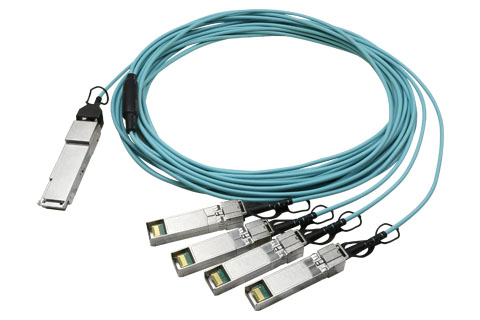In the realm of high-speed data transfer, the QSFP28 (Quad Small Form-Factor Pluggable 28) module has emerged as a game-changer.
This small yet powerful optical transceiver has revolutionized networking infrastructure, providing unparalleled data transmission capabilities.
In this article, we delve into the specifications and features of QSFP28 to understand its significance in the ever-evolving world of technology.
High-Speed Data Transmission
The QSFP28 module is designed to facilitate blazing-fast data transmission rates. It supports speeds of up to 100 Gigabits per second (Gbps), making it ideal for bandwidth-intensive applications.
By harnessing four 25 Gbps channels or four 28 Gbps channels, QSFP28 achieves remarkable throughput. Its ability to handle massive data volumes effectively has made it indispensable in data centers, cloud computing environments, and high-performance computing clusters.
Compact Form Factor
Despite its incredible capabilities, the QSFP28 module maintains a compact form factor. With dimensions of just 18mm x 33mm x 121mm, it enables high port density within networking equipment.
This compactness allows for efficient space utilization, making it easier to accommodate multiple QSFP28 modules within a single switch or server.
As the industry standard for 100 Gbps connections, QSFP28 has significantly contributed to reducing the physical footprint of network infrastructures.
Optical and Electrical Interfaces
QSFP28 supports both optical and electrical interfaces, providing flexibility in various networking environments. The optical interface utilizes parallel single-mode or multimode fibers, enabling long-distance connectivity.
It supports reach options of up to 10 kilometers using single-mode fiber. Additionally, QSFP28 offers direct-attach copper cables, which provide cost-effective, short-reach interconnectivity options. This versatility makes it adaptable to a wide range of applications, allowing seamless integration within existing network architectures.
Hot-Pluggable and Interoperable
The QSFP28 module is hot-pluggable, allowing for easy installation and replacement without interrupting the entire system. It follows the industry-standard MSA (Multi-Source Agreement), ensuring compatibility across different networking equipment manufacturers.
This interoperability enables network operators to choose the best components for their infrastructure, promoting flexibility and cost-effectiveness. Moreover, QSFP28 is backward-compatible with previous QSFP modules, allowing for seamless migration to higher speeds without requiring a complete overhaul of the existing infrastructure.
Power Efficiency and Thermal Management
QSFP28 prioritizes power efficiency and effective thermal management. The module integrates advanced features such as power monitoring, which allows real-time tracking of energy consumption.
It optimizes power usage to ensure minimal energy wastage, contributing to greener and more sustainable networking solutions. Additionally, QSFP28 employs intelligent thermal management mechanisms to maintain optimal operating temperatures.
This prevents overheating issues, ensuring reliable and consistent performance even in demanding environments.
Conclusion
The QSFP28 module has become a cornerstone of high-speed data transmission, providing unmatched performance, compactness, and flexibility. With its ability to handle immense data volumes, compatibility across vendors, and emphasis on power efficiency, QSFP28 is poised to shape the future of networking infrastructures, catering to the ever-growing demands of the digital era

















































